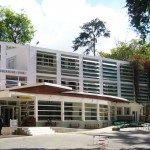About
PCT/IB2012/001609, august 7th, 2012
Yersinia pestis, the causative agent of plague, is among the deadliest infectious agents affecting humans. Transmitted by infected fleas, Y. pestis causes primarily bubonic plague. The disease occasionally evolves to pneumonic plague, the most deadly and contagious form of the infection, which is then transmitted from human to human by aerosols. Since the beginning of the nineties, plague has been included in the list of re-emerging diseases and Y. pestis is classified as a potential biological weapon for terrorist use. Because antibiotic resistant strains of Y. pestis have been observed or could be engineered for evil use, vaccination against plague might become the only means to fight against the disease. No safe and effective plague vaccine is currently available. Most efforts made in the recent years focused on subunit formulations combining the capsular F1 antigen and the V antigen (LcrV). Such vaccines however require the use of an adjuvant and repeated injections to confer a mostly antibody-dependent protection. Other strategies included the attenuation of live Y. pestis by genetic engineering, the introduction of Y. pestis antigens in Salmonella or virus vectors, and DNA vaccination. We chose a vaccine strategy based on vaccination with a live, attenuated strain of Yersinia pseudotuberculosis, as this species is genetically almost identical to Y. pestis, but of much lower pathogenicity and higher genomic stability. We had previously constructed an attenuated strain of Y. pseudotuberculosis IP32953, named V674, by deletion of genes coding for three essential virulence factors. We subsequently introduced a plasmid encoding the F1 pseudo capsule of Y. pestis to further increase its immunogenicity. The resulting strain, named V674pF1, protected efficiently against pneumonic plague, but not completely against bubonic plague, and did not allow a stable and persistent production of the F1 capsule.
Novelty: To circumvent the two major drawbacks of V674pF1, we have constructed a new V674 derivative in which the operon encoding the Y. pestis pseudo capsular antigen F1 has been stably inserted into the chromosome, using a Tn7 mini-transposon. The new strain, designated VTnF1, is as strongly attenuated (LD50>1010 CFU, oral route) as the previous V64pF1 strain, but produces the F1 capsule in a stable manner. A single oral inoculation of 108 CFU of V674TnF1 provides 100% protection against pneumonic plague after a challenge with 105 (33xLD50), and even 107 CFU (3,300xLD50) of Y. pestis. It also confers 100% protection against bubonic plague after a challenge with 103 CFU (100xLD50) of Y. pestis and 93% after a challenge with 105 CFU (10,000xLD50). Finally, a single subcutaneous injection of 107 CFU of V674TnF1 protected 100% of the vaccinated animals against both bubonic and pneumonic plague, even when a high challenge with Y. pestis was used (105 and 107 CFU, respectively).







